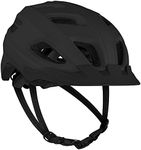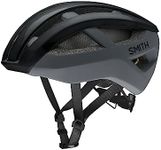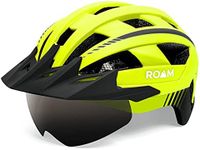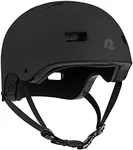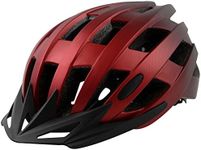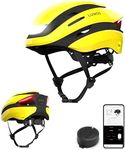Buying Guide for the Best Commuter Bike Helmets
Choosing the right commuter bike helmet is crucial for your safety and comfort while riding. A good helmet can protect you from head injuries in case of an accident and also provide comfort during your daily commutes. When selecting a helmet, consider factors such as fit, ventilation, weight, and additional features that can enhance your riding experience. Here are some key specifications to help you make an informed decision.FitThe fit of a helmet is one of the most important aspects to consider. A helmet that fits well will stay securely on your head and provide maximum protection. To find the right fit, measure the circumference of your head and choose a helmet size that matches. Helmets usually come with adjustable straps and retention systems to fine-tune the fit. Make sure the helmet sits level on your head and doesn't move around when you shake your head. A well-fitted helmet should feel snug but not too tight.
VentilationVentilation refers to the number and size of vents in a helmet that allow air to flow through and keep your head cool. This is especially important for commuter helmets, as you may be wearing them for extended periods. Helmets with more vents generally provide better airflow, which can help prevent overheating and sweating. If you ride in hot climates or tend to sweat a lot, look for a helmet with ample ventilation. Conversely, if you ride in colder weather, you might prefer a helmet with fewer vents to retain warmth.
WeightThe weight of a helmet can affect your comfort, especially during long commutes. Lighter helmets are generally more comfortable to wear for extended periods, as they put less strain on your neck and shoulders. However, lighter helmets can sometimes be more expensive. When choosing a helmet, consider how long your typical commute is and how much weight you are comfortable carrying on your head. A helmet that balances weight and protection is ideal for most commuters.
Safety StandardsSafety standards ensure that a helmet provides adequate protection in the event of an accident. Look for helmets that meet recognized safety standards such as CPSC (Consumer Product Safety Commission) in the US, EN 1078 in Europe, or AS/NZS 2063 in Australia/New Zealand. These standards indicate that the helmet has passed rigorous testing for impact resistance and other safety criteria. Always choose a helmet that meets or exceeds these standards to ensure maximum protection.
VisibilityVisibility features on a helmet can enhance your safety by making you more noticeable to other road users. Some helmets come with built-in reflective elements or bright colors that increase your visibility in low-light conditions. Others may have integrated lights or mounts for attaching lights. If you often ride in the early morning, evening, or at night, consider a helmet with enhanced visibility features to improve your safety on the road.
Comfort FeaturesComfort features such as padding, adjustable straps, and moisture-wicking liners can make a significant difference in your overall riding experience. Look for helmets with removable and washable padding to keep your helmet fresh and clean. Adjustable straps and retention systems allow you to customize the fit for maximum comfort. Moisture-wicking liners help manage sweat and keep you dry. Consider your personal comfort preferences and choose a helmet with features that will make your commute more enjoyable.

